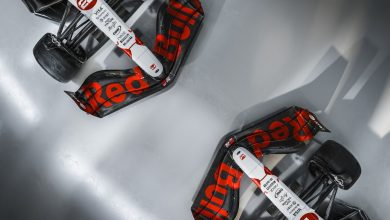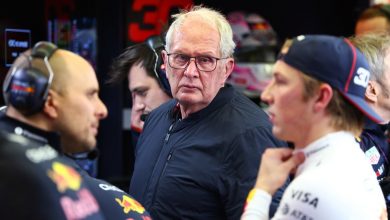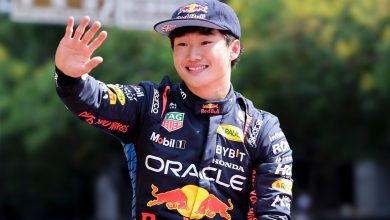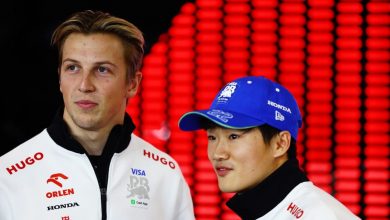Why the FIA is confident the F1 flexi-wing saga isn't yet over
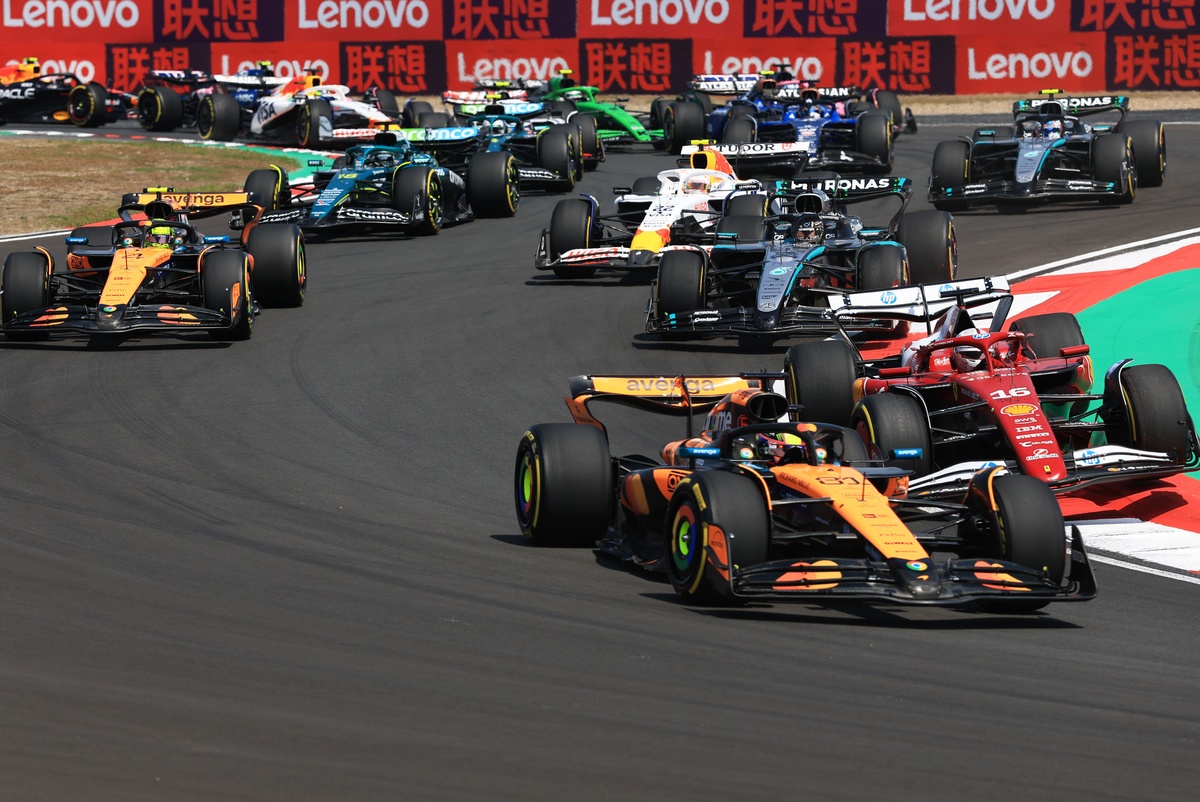
The FIA has given a further clarification over its decision to keep tightening Formula 1’s rear wing deflection tests, and defended the delay of its stricter front wing tests until the Spanish Grand Prix.
Over the last few years exploiting aero-elasticity has emerged as a key tool to keep this generation of ground-effect cars balanced between faster and slower corners, so much so that teams were starting to take liberties with the maximum deflection that is allowed in the rules.
Initially the FIA felt its static tests were enough to keep the practice under control, but as a response to a swell of complaints from teams about their competitors, F1’s governing body has since made a U-turn on that decision in a bid to stop flexing wings becoming a main talking point throughout 2025.
It clamped down on rear wing flexing, made notorious by McLaren’s so-called mini-DRS effect in Baku last year, by imposing a more restrictive deflection tolerance from the start of the season. Stricter front wing tests will follow at Barcelona’s Spanish Grand Prix at the end of May, a delay meant to ensure teams wouldn’t have to discard existing designs over the winter.
After analysing its findings from winter testing, the FIA decided to further tighten up its technical directive on rear wing flexing for last weekend’s Chinese Grand Prix. Explaining that decision to select media in Shanghai, including Motorsport.com, the FIA’s head of single-seater Nikolas Tombazis says the governing body noticed at Bahrain’s winter test that its rear wing clampdown wasn’t sufficient.
“We thought what we had done for the mini-DRS characteristic was enough, but we were not completely confident,” he said. “That’s why we asked to put cameras on the cars so that we could monitor the situation, and it became obvious during the Bahrain test that it was not enough.

Nikolas Tombazis, FIA Single Seater Director
Photo by: Andy Hone / Motorsport Images
“And rather than let it precipitate into a long game of press comments, photographs and complaints, we thought it would be best to take a decisive action. We also felt that the type of modifications teams needed to do to comply were relatively doable for those who were more exhibiting that phenomenon. China, of course, had very long straights, and I don’t think anyone would be talking about anything else if we hadn’t done it, so that’s why we thought it was best to get decisive.”
Tombazis said “four or five” teams were affected by the stricter tests. Over the Shanghai weekend, Alpine was one team admitting it had to make rear wing tweaks. McLaren has also long been under suspicion since its mini-DRS saga, but it denied having to make any changes. Ferrari and Haas have also been pointed at.
Is this the end of the mini DRS story?
The difference between a wing’s behaviour during a static load test and in a live environment at over 180mph has always made aero-elasticity so difficult to police, and tools to further exploit loopholes can involve car set-up, the specific construction of the wing and the materials applied.
But according to Tombazis there has been a strong enough correlation between static tests and the info gathered from its on-board cameras to ascertain that there is no special trickery going on beyond the linear deflection that happens when an airfoil is being subjected to high airspeeds.
“We saw quite a clear correlation between the deflection measured by the FIA test and what we saw with the cameras,” he explained. “We take the view that a car that complies with FIA tests is fundamentally legal, unless there are some hidden mechanisms or things relying on non-linear characteristics, temperature or what have you, in which case we would intervene. We also have the right to go to a team and say: ‘Look, you’re going a bit too far here, you need to really do something.’ At the moment we think it’s okay.”
But flexing remains a delicate subject matter, so Tombazis didn’t want to sound too confident the China solution would be the end of the matter. “Confident is probably quite a big word, but I’m hopeful that it will be enough. We could reduce the [tolerance] number even more if necessary, and we can also start going more in detail into the DRS mechanism and try to control exactly how they set it up. At the moment I think we are okay, but I don’t want that to be taken as overconfidence.

Lance Stroll, Aston Martin Racing, Pierre Gasly, Alpine, Carlos Sainz, Williams
Photo by: Sam Bloxham / Motorsport Images
“It’s a reasonably complex phenomenon, which is why we’re continuing to have cameras and we’ll continue to monitor just to be sure.”
Cutting the cake evenly
Unless further issues crop up over the next few races, attention will now likely shift to the FIA’s front wing clampdown in Barcelona. Some teams felt aggrieved that both wings weren’t addressed right from the start of the season, because now outfits that are at the forefront of exploiting the topic can continue doing so for eight races. For others the delayed clampdown meant that they didn’t have to throw away carryover front wing designs and design a new one for Melbourne, which would have been a tight turnaround.
As is always the case in F1, there was never going to be a perfect solution that pleases everyone. “I think it is extremely difficult to cut the cake in a way that everyone gets exactly the same size,” Tombazis said over the split opinion in the paddock on the delay. “I certainly remember when my kids were young, to cut any cake at the right size was quite challenging! I feel the same now. There will always be complaints from one side or the other side of the equation.
“We have a cost gap and front wings cost a lot of money. A lot of teams have a rule of continuity, therefore there’s a lot of carryover. We felt saying something in December [to change the design] for the start of the season was a bit too harsh and it was better to delay it a bit. But there’s no perfect decision.”
In this article
Be the first to know and subscribe for real-time news email updates on these topics
